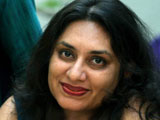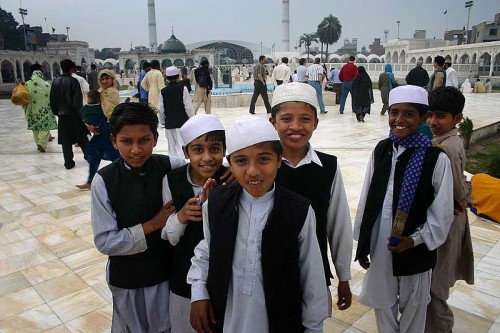Pakistan, The Villain
The media’s demonization of Pakistan presents hardship for its citizens.
I recently re-read a Sunday Telegraph article from 2012 that was written by journalist Peter Oborne about his assignment in Pakistan. Oborne was originally instructed to write a story portraying Pakistan as a terrible, dangerous country, but found he was incapable of completing the assignment in the manner he’d been briefed simply because it wasn’t true. While in Pakistan Oborne concluded that the country was a place where people were mostly decent, kind, and normal. He’d “fallen in love” with the place, and urged others to look at the country with less prejudiced eyes.

- Pakistan is a country of contradictions – full of promise for growth, modernity and progress, yet shrouded by political, social and cultural issues that undermine its quest for identity and integrity. My bi-monthly column “Pakistan Unveiled” presents stories that showcase the Pakistani struggle for freedom of expression, an end to censorship, and a more open and balanced society.

- Bina Shah is a Karachi-based journalist and fiction writer and has taught writing at the university level. She is the author of four novels and two collections of short stories. She is a columnist for two major English-language newspapers in Pakistan, The Dawn and The Express Tribune, and she has contributed to international newspapers including The Independent, The Guardian, and The International Herald Tribune. She is an alumnus of the International Writers Workshop (IWP 2011).
In his story Oborne quoted one of those prejudiced individuals, the late writer Christopher Hitchens, who had described Pakistan in these terms:
“Pakistan, he said, was ‘humourless, paranoid, insecure, eager to take offense and suffering from self-righteousness, self-pity and self-hatred’. In summary, asserted Hitchens, Pakistan was one of the ‘vilest and most dangerous regions on Earth.’”
Hitchens was well known for his wit and ability to turn a beautiful phrase; however his characterization of a country in the way one might portray a cartoon villain was a definite lapse for a writer with any kind of appreciation for nuance or subtlety. Perhaps Hitchens’ abilities deteriorated once he’d sworn allegiance to the “Dark Side”—what I like to call the neo-conservatives of the George W. Bush era.
Hitchens’ crass description of Pakistan also brings to mind the witty insult that English cricketer Ian Botham came up with when he declared that he’d love to send his mother-in-law to Pakistan, all expenses paid. But if there’s any poetic justice in sending a man’s most villainous relative to the world’s most villainous country, it was served when the Daily Mirror, one of the UK’s major tabloids, actually sent Botham’s mother-in-law to Pakistan. To Botham’s surprise, she returned as enamored with the country as Oborne. We Pakistanis recognize the mother-in-law’s power to make or break a marriage; perhaps Mrs. Waller received the kind of respect in Lahore that Botham was incapable of giving her in London.
Now let’s shift the focus to a recent development. The new Kathryn Bigelow movie Zero Dark Thirty is about the capture and killing of Osama bin Laden. It represents yet another instance of a villainous character inhabiting villainous Pakistan. Not surprisingly, Pakistani viewers report that the movie is riddled with inaccuracies. For one thing, it’s shot entirely in India; telltale black and yellow Maruti taxis are seen roaming the streets, even though these don’t exist in Pakistan. Pakistanis are also heard speaking Arabic, despite the fact that our country is not part of the Middle East. In fact, we are separated from the nearest Arabic-speaking country by both Afghanistan and Iran. Additionally, Abbotabad, the location of Osama bin Laden’s hideout, is said to be 45 kilometers from Islamabad, when, in actuality, it’s 116 kilometers from the nation’s capital.
Still, it’s the way that Pakistan and its inhabitants are portrayed that stings the most. When watching the movie, I’m told, the viewer gets the impression that all Pakistanis hate Americans, or that the country is as failed and broken as Somalia or Afghanistan. It also appears as though the Pakistanis are lying, duplicitous people whose intelligence agency, the ISI, was intent on double-crossing those involved simply because that’s the way that Pakistanis are. After conducting a survey on Twitter, I was saddened to find many Pakistanis who admitted that they were used to their country being portrayed in this unflattering manner and expect it to continue for a long time to come.
When you paint an entire nation as a villain, a strange phenomenon happens: It becomes easier to kill its people. When you paint them as evil and label its citizens as others, you can convince yourself that you are good. This is the trap that Hitchens, Botham, and Bigelow fell into when they contributed to the narrative upholding the myth about Pakistan’s villainous nature. This ongoing narrative allows drone attacks to continue in the northern areas of the country. These drones kill terrorists, surely, but they also kill innocent men, women, and children. And though it’s easy to think of killing them as a videogame, or to characterize them as “bugsplats,” it’s not as easy to think of the villains that live in the “good” countries, where peace and prosperity paints everyone with the brush of the righteous, in the blood of the innocent.






One Comment on "Pakistan, The Villain"
Trackbacks for this post